I personally don't believe that you can go over-the-top with a meal as long as the taste is worth it in the end. I don't find anything wrong with spending hours in the kitchen, or searching high and low for the best ingredients, or meticulously planning out the details of each course. Food is something worth laboring over. However, sometimes we have to resist the urge to go all-out, and remember that some of the most amazing things we have ever eaten have been simple-- a fresh fig and drizzle of honey, a slice of tomato, a bit of mozzarella, and a drizzle of balsamic vinegar, or a flavorful cheese balanced with a sip of wine. There is something to be said about the amplified appeal of food when paired correctly, a sort of effort that requires more knowledge than hard work.
I'll be completely honest and say that I didn't have that knowledge a few weeks ago, but I made the effort to educate myself on flavor profiles and pairings and it most definitely paid off.
Keep in mind, if you put cheese and meat on a plate and pour me a glass of wine, I don't really care if they go together well, I just want to eat them all. Usually, that is. But after a visit from my Aunt Sandy, who picks at antipasto every night and once cried (yes, seriously) while on vacation because she missed her smoked meats and sharp cheeses, I really was yearning for a spread that contained more than just pre-sliced pepperoni and cheddar.
As I mentioned, when I decided to put together Italian wines, cheeses, and meats for a little picnic picking enjoyment of my own, I needed some guidance. Today, I want to share with you some of what I learned, and ideas that will inspire you to create your own delicious platters for picnics, parties, or snacking.
My Wine and Antipasto Spread:
To start things off, I feel like I should let you know what I chose to include in my picnic, and then we can talk about how I came to this decision. Keep in mind that this was heavily influenced by my own personal tastes and is only an example of combinations you can put together.
Meats: Soppressata, Prosciutto, and Bresaola
Cheese: Provolone, Parmigiano Reggiano, and Fontina
Wine: Pinot Grigio and Chianti
Other: Fried Stuffed Olives, Fresh Tomatoes, Crusty Italian Bread, Breadsticks, Almonds, and Roasted Red Pepper Salad
Light to Full:
One of the most important things about pairing wine and food is to make sure that you are paying attention to "light, medium, and full". You always want to start with light-bodied wines and move to full-bodied wines when tasting, and you want to make sure that the foods you eat are proportionately light or full in flavor as they accompany your wine in order to neither overpower nor be overshadowed by the wine. This knowledge can also help you decide what you want to use in your antipasto spread.
I wanted to try my hand at pairing light-, medium-, and full-bodied wines, but that can get expensive and three bottles can be a hassle to tote around. (Also, as much as I love wine, my little picnic with James and Amanda didn't require 3 whole bottles.) As a result, I decided to stick with a light white and a medium-bodied red, to get an array of flavor without too drastic of a jump.
This meant that I had to eliminate some of the more intensely flavored meats and cheeses from my list. Fatty, spicy meats work better with full-bodied wines with plenty of tannins, and strong cheeses like Gorgonzola need to be similarly balanced. I'll explain this more in just a few minutes when I get into the Elements of Pairing, but now you should understand that you want to keep delicate, light wines and foods together and flavorful, heavy wines and foods together.
What Grows Together, Goes Together
If you are not extremely knowledgeable about food and wine pairings, I recommend that you stick to this idea. In most cases, you will find that putting your wines with foods that are made in or harvested from the same area will result in enjoyable flavor combinations. On the most basic level, we can take this to mean that we should stick to drinking Italian wines with our antipasto, considering that we will be including Italian meats and cheeses.
As mentioned previously, I chose Pinot Grigio and Chianti, which are both Italian wines. Pinot Grigio is typically from Northeastern Italy, and Chianti is from central Tuscany in Central Italy. I further used "What Grows Together, Goes Together" to help me narrow down my antipasto foods using this information. Take a look at the list below and try to keep your food regional with your wine:
Northern Italy:
- White Wine: Moscato, Arneis, Cortese, Vermintino, Pigato, Chardonnay, Verdicchio, Pinot Bianco, Pinot Grigio, Fruilano, Glera (Prosecco) Gargenega
- Red Wine: Picotendro (Nebbiolo), Pinot Noir, Nebbiolo, Barbera, Dolcetto, Rossese, Sangiovese, Schiava
- Meat: Prosciutto, Bresaola, Pancetta, Prosciutto, Genoese, Soppressata
- Cheese: Asiago, Bel Paese, Fontina, Gorgonzola, Marscapone, Parmigiano, Taleggio
- Other: Fennel, Polenta, Basil, Pine Nuts, Walnuts, Balsamic Vinegar, Almonds
Central Italy:
- White Wine: Malvasia, Trebbiano, Vermentino, Ansonica (Inzolia), Grechetto, Pecorino, Bianchello, Verdicchio
- Red Wine: Sangiovese, Merlot, Cabernet Sauvignon, Sagrantino, Cesanese, Canaiolo, Montepulciano, Lacrima, Lambrusco, Chianti
- Meat: Prosciutto, Coppa, Dry Cured Hot Coppa, Pancetta, Finocchiona, Felino, Soppressata
- Cheese: Parmigiano (Reggiano), Pecorino (Romano)
- Other: Mushrooms, Chestnuts, Olives, Garlic, Capers, Kale, Farro, Almonds, Crostini, Roasted Red Pepper
Southern Italy:
- White Wine: Fiano, Falanghina, Greco, Moscato, Chardonnay, Catarratto, Grillo, Inzolia, Vermentino, Malvasia
- Red Wine: Cannonau (Grenache), Carignan, Cabernet Sauvignon, Aglianico, Syrah, Nero d'Avola, Gaglioppo, Magliocco, Primitivo, Negroamaro, Malvasia Nera, Uva di Troia
- Meat: Capocollo, Pancetta, Soppressata
- Cheese: Mozzarella (di Bufala), Provolone, Ricotta
- Other: Tomatoes, Olive Oil, Peppers, Olives, Garlic, Artichokes, Oranges, Figs, Eggplant, Zucchini, Capers, Anchovies, Almonds
This isn't a complete list, but it should give you a good idea. As you can tell, there are several wines, cheeses, meats, and more that share different regions. Choosing these may make pairing easier and give you more options.
If you're worried that what you wanted to pair isn't from the same area, don't fret. This is only meant to help, and pairing meat or cheese with wine that is not from the region isn't necessarily a bad thing. For example, although my wines are from Northern and Central Italy, I chose to include Provolone, from Southern Italy, in my antipasto. Why? Because I really like provolone. Eat what you like, drink what you like, above all.
Elements of Pairing
You could most likely make a very nice platter without any of the following information, but if you'd really like to get into the specifics of how pairings work, you should understand and consider the 6 elements of pairing: fat, acid, salt, sweetness, bitterness, and texture.
Fat: The fattier a food is, the fuller the wine should typically be. Because wine doesn't contain fat to give its own meaty flavor, wines higher in acid, tannins, and alcohol usually compliment meats in their ability to cut through or balance that fattiness. Simultaneously, the fat tames some of the more aggressive flavors of full-bodied, high-tannin wines, allowing more of the subtle fruity flavors to be enjoyed. If you would like to use a fatty salami in your spread, a full-bodied red would be a good choice.
Acid: The more acidic the food, the more acidic the wine must be. If a meal features lemony or vinegary flavors, for example, the wine would have to be exceptionally acidic in order to not taste bland as a pairing. Generally, white wines are more acidic than red wines, but this can vary. Sauvignon blanc is a reliable choice for pairing with, say, balsamic vinegar or artichokes.
Salt: Salty foods can often make wines taste strange or bitter. However, there is also huge potential for some great salty-sweet flavor, if done correctly. Acidic white wines and sparkling wines are typically your best bet for pairing with saltier foods, like pancetta.
Sweet: With sugary meals, be sure to always find a wine that is slightly sweeter than the food it's paired with. Dessert wines work well for, well, desserts, and higher-alcohol white wines tend to work well with sweet-glazed meats. This likely won't come into play in your antipasto, but it is still worth knowing.
Bitter: While sweet foods call for sweeter wines, bitter foods do just the opposite. Pairing, say, bitter olives with a bitter wine will create an unenjoyable taste that lingers in the mouth. Instead, when pairing wine with olives, drink a white wine like Sauvignon Blanc or Pinot Grigio that will bring out the fruitier notes in the olives and tame the saltiness and bitterness, or a Chianti, which will not amplify the bitterness like bolder reds will.
Texture: Here is where the "light, medium, full" concept comes into play, which, in my opinion, is the one that is easiest to grasp. Keep light food with light wine and heavy food with heavy wine. For example, prosciutto, a lighter cured meat, pairs well with Pinot Grigio, a light-bodied wine.
While this guide hopefully helped you, remember to be adventurous once you feel comfortable with your knowledge or pairing, and use your own opinions about what will work together! Also, feel free to check out our wine section for awesome additions to your picnic or party, like stemless wine glasses, wine totes and picnic baskets, and more. Enjoy!


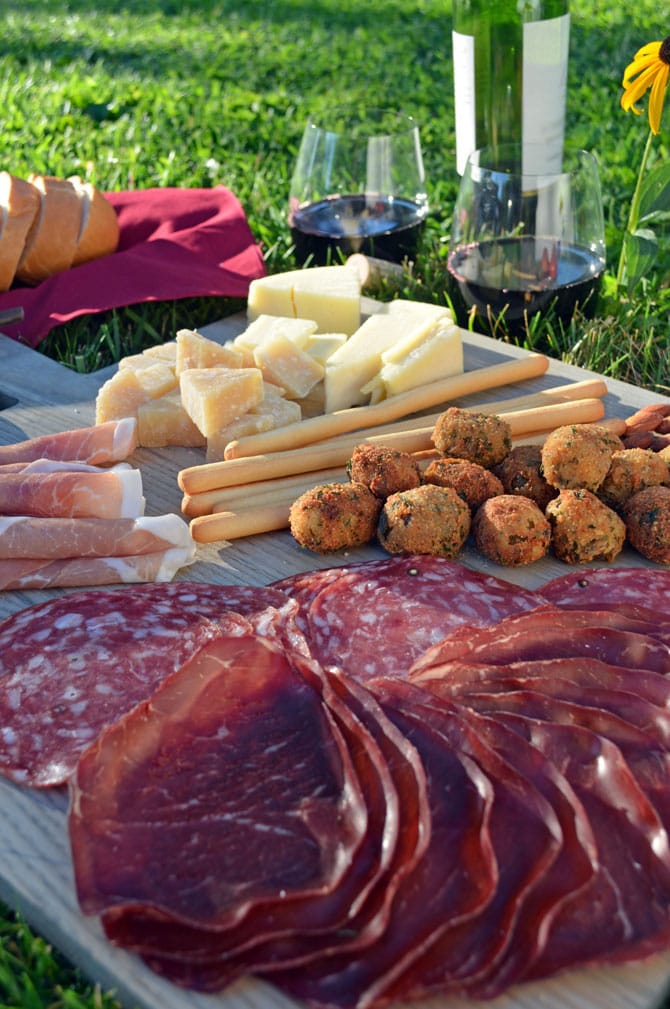
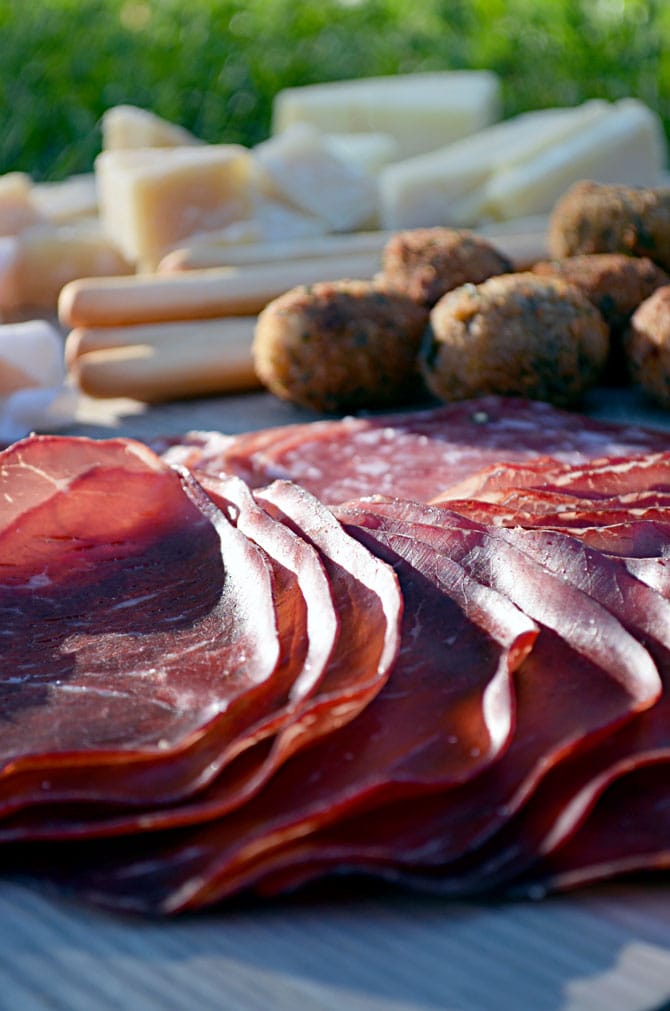
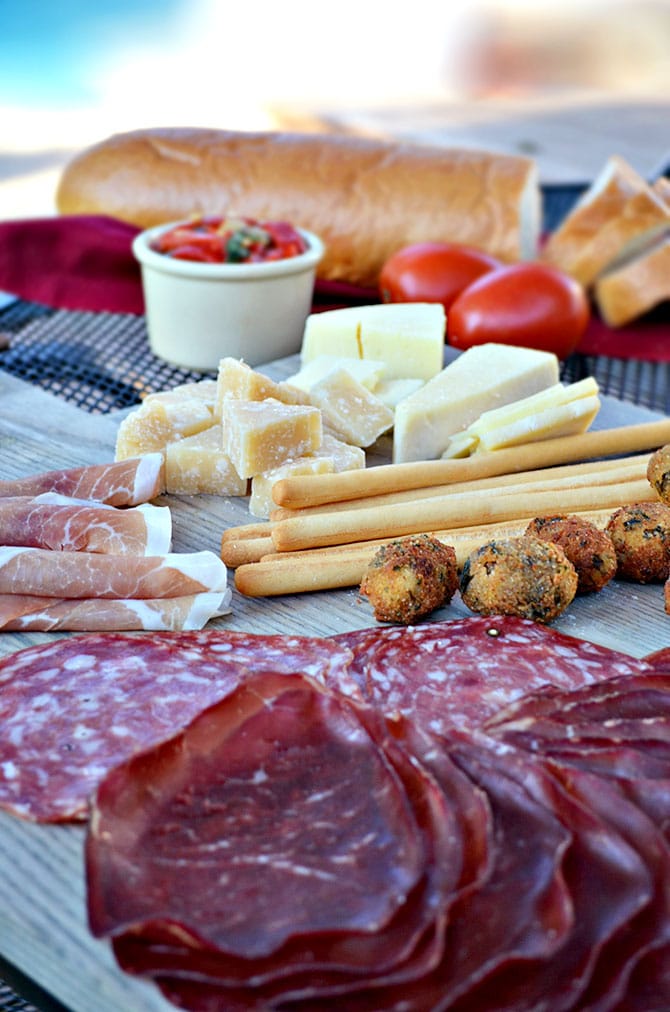

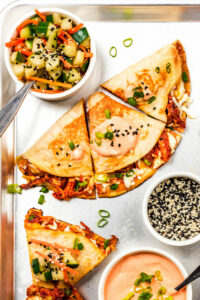
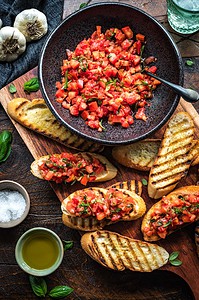
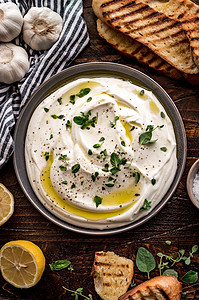
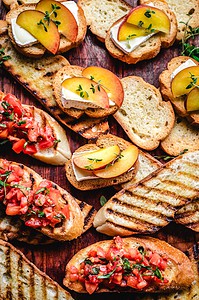

Julia says
Beautiful pictures. Antipasto is my favorite way to eat. I believe in your first sentence you meant to say CAN'T go over-the-top. Thanks for a great post.
Raymond says
Great article I was in the mood for some soppressata and sharp provolone from my local Italian importer and needed an idea for some wine to go with it. You gave me so much more I didn't expect and now I really got the munchies!!!
Morten says
We do love Italian food & wine. Lovely post with great pictures.
Shane says
My god! And I thought the Hells Angels where tuff! Morgan doesn't take any s*** when it comes to pairing! like a drill sergeant!
I thought I was tuff in the cheese section but I'm gonna have to step up my game this instant!